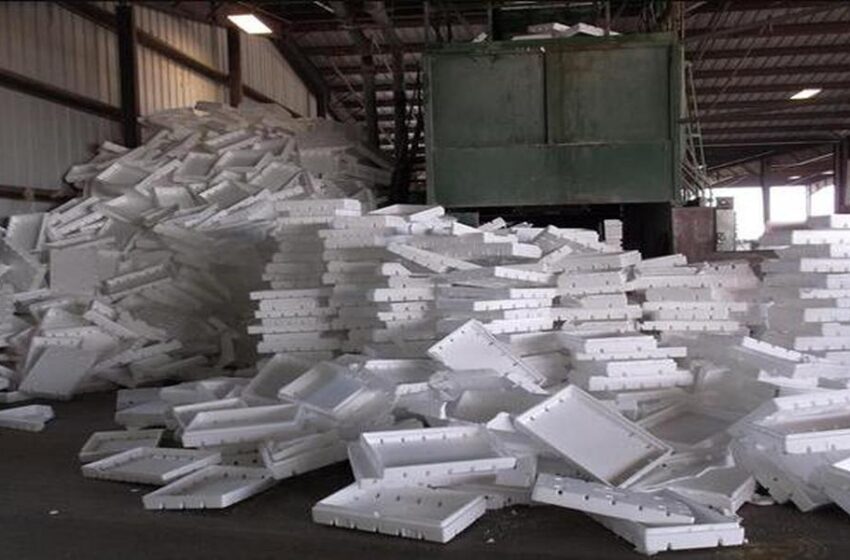Turning Waste into Wealth: The Benefits of Expanded Polystyrene Foam Recycling

Expanded polystyrene foam, commonly known as Styrofoam, is a lightweight and versatile material used in packaging, insulation, and even consumer products. However, Styrofoam is notorious for being difficult to recycle due to its low density and fragile structure. Fortunately, expanded polystyrene foam recycling is becoming more accessible and widespread, providing numerous benefits for businesses, communities, and the environment.
What is Expanded Polystyrene Foam Recycling?
Expanded polystyrene recycling involves collecting, compacting, and melting down Styrofoam products to create new materials. While Styrofoam products take up a significant amount of space in landfills and can persist for hundreds of years, recycling them offers many advantages.
The Benefits of Polystyrene Foam Recycling
Environmental Benefits
Styrofoam is made from petroleum-based products, which are non-renewable and contribute to greenhouse gas emissions during production. Recycling Styrofoam reduces the need for virgin materials, conserves energy, and helps to reduce the carbon footprint associated with its production.
Additionally, Styrofoam takes up a considerable amount of space in landfills, where it can take hundreds or even thousands of years to decompose. Recycling Styrofoam products can help to reduce landfill waste and support sustainable waste management practices.
Economic Benefits
Expanded foam recycling can also provide significant economic benefits, particularly for businesses that produce large volumes of Styrofoam waste. By recycling Styrofoam, businesses can reduce disposal costs, increase efficiency, and potentially generate revenue through the sale of recycled materials.
Moreover, recycling Styrofoam creates jobs in the recycling and manufacturing industries, contributing to local economies and supporting sustainable economic growth.
Social Benefits
Polystyrene foam recycling also has significant social benefits. By reducing landfill waste and conserving resources, recycling Styrofoam supports a healthier environment for communities and future generations.
Furthermore, recycling Styrofoam can help to address environmental justice concerns, as low-income and marginalized communities often bear a disproportionate burden of waste disposal and pollution.
Expanded Polystyrene Foam Recycling Methods
There are several methods of polystyrene foam recycling, each with its own advantages and limitations. Here are three common methods:
Mechanical Recycling
Mechanical recycling involves breaking down Styrofoam products into small pieces and compressing them into dense blocks that can be melted down to create new products. While this method is simple and cost-effective, it requires clean, uncontaminated Styrofoam and may not be suitable for all types of Styrofoam products.
Chemical Recycling
Chemical recycling involves dissolving Styrofoam products in a solvent that breaks down the material’s polymer chains, enabling the recovery of the original monomer for reuse. While this method has the potential to recycle contaminated Styrofoam, it can be expensive and energy-intensive.
Pyrolysis
Pyrolysis involves heating Styrofoam products in the absence of oxygen, causing them to break down into their constituent chemicals. This method has the potential to recycle contaminated Styrofoam and recover valuable chemicals, but it can also be expensive and energy-intensive.
Challenges and Solutions
While polystyrene foam recycling offers numerous benefits, there are also several challenges to overcome. One major challenge is collecting and sorting Styrofoam waste, which can be difficult due to its low density and fragility. Additionally, Styrofoam products often contain contaminants, such as food residue or adhesives, which can make them difficult to recycle.
To overcome these challenges, many communities and businesses have implemented Styrofoam recycling programs that offer collection points and educate consumers on proper recycling practices. Furthermore, technological advancements are making Styrofoam recycling more efficient and cost-effective, enabling the creation of new products from recycled Styrofoam.
Conclusion
Expanded polystyrene foam recycling is an essential component of sustainable waste management and offers numerous benefits for businesses, communities, and the environment. By reducing landfill waste, conserving resources, and supporting sustainable economic growth, recycling Styrofoam can turn waste into wealth and help to build a more sustainable future. As polystyrene foam recycling becomes more accessible and widespread, it is essential to continue educating consumers and businesses on proper recycling practices and supporting technological advancements in Styrofoam recycling methods.
